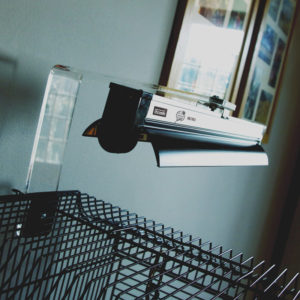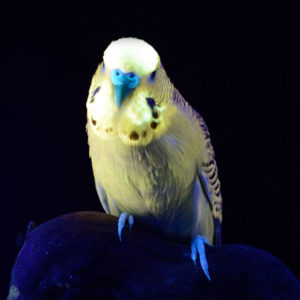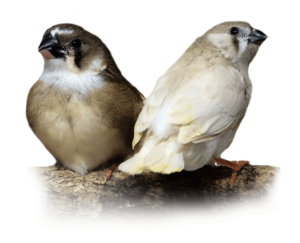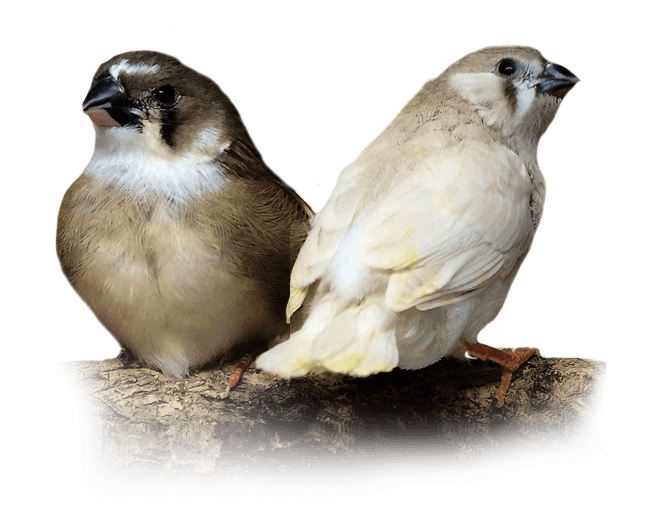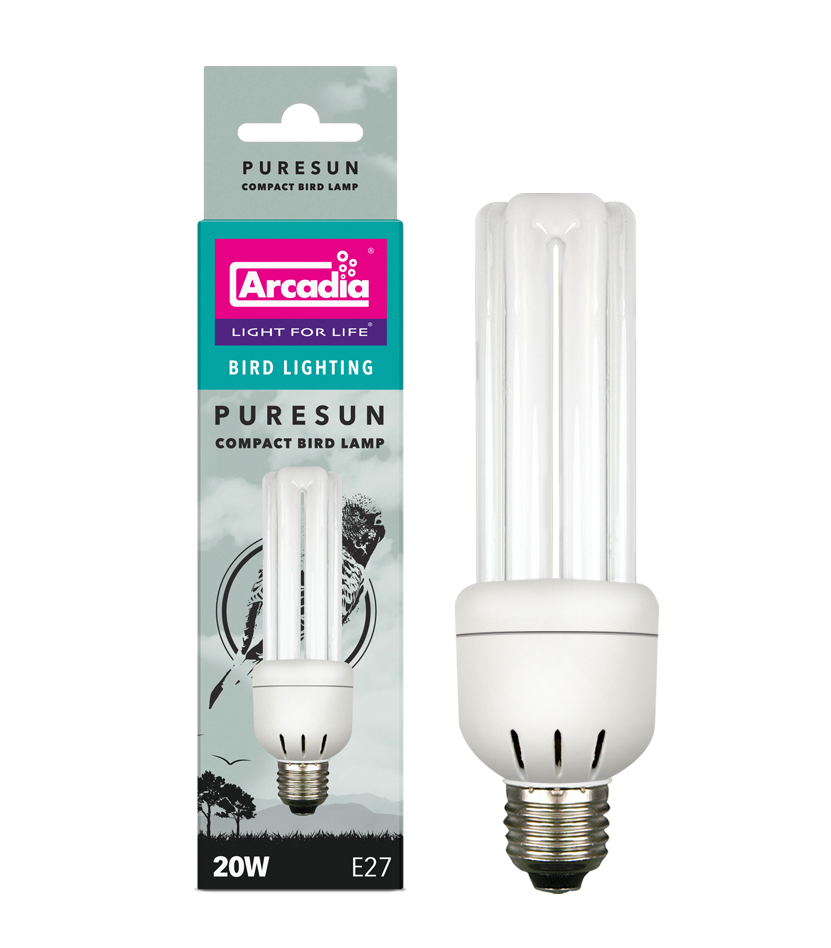UVB can halt feather plucking and bad behaviour
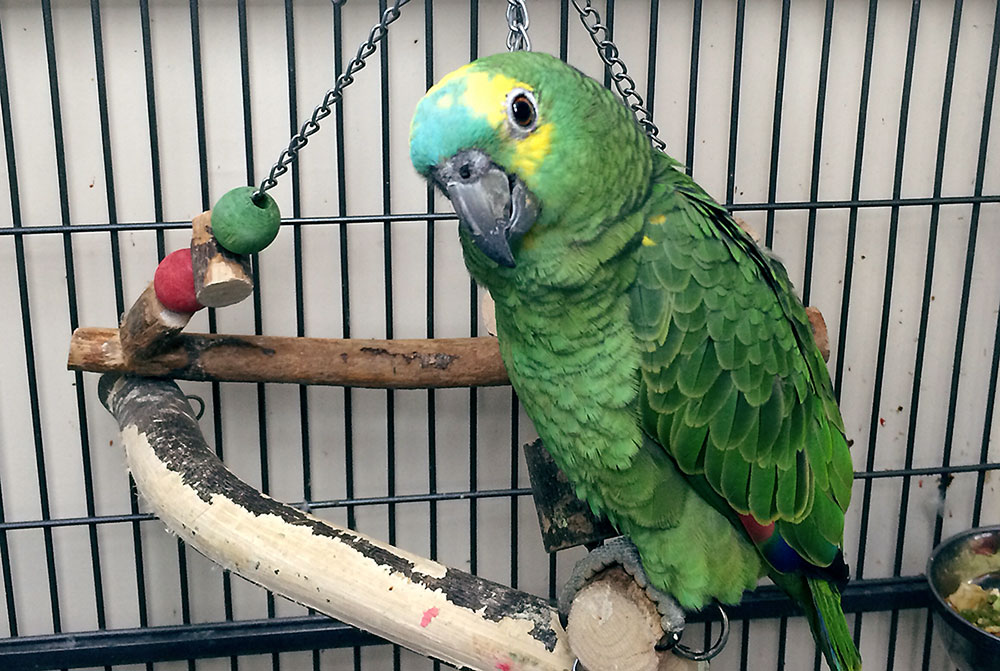
John Courtney-Smith, a parrot and reptile enthusiast, has developed a great interest in specialist UV-lighting and the science behind the systems, working and advising at Arcadia. In the first part of this series John looked at the importance of UVA-light, in part II he discusses UVB and how its use can halt feather plucking and bad behaviour.
UVB is the term used to describe the wavelengths of light between 290-320nm – far into the blue spectrum. This light, invisible to humans, would need to be provided at these wavelengths and with enough power, to start and complete what is commonly known as the D3 cycle. This is the ability of birds, reptiles and mammals to produce and utilise vitamin D3 in the skin after exposure to unfiltered natural sunlight.
Vitamin D3, along with many other uses allows the assimilation of calcium. Without vitamin D3 in the correct levels, calcium simply cannot be absorbed into a bird’s system efficiently. Birds, mammals and reptiles rely on this natural process to flourish in the wild.
A lack of D3 and calcium can cause painful and even fatal conditions in birds and reptiles, the most common of which is called, ‘metabolic bone disease’ or MBD. This is a terrible condition caused by a critical lack of calcium in the body. Bones affected by this preventable condition will turn rubbery and become misshapen. Rickets is probably the closest disease that occurs in humans, for reference.

How does the D3 cycle work?
The following is an excerpt from my new book, ‘Light and its effects on crepuscular animals,’ which details how light travels through forests and its effect on all forest inhabitants:
“This amazing process begins when a cholesterol called pro-vitamin D(7DHC) is produced in the skin of a bird, mammal or reptile. When this cholesterol is exposed to natural light including light in the UVB wavelength (290-320nm) this cholesterol is turned in the skin membrane into pre-vitamin D. This newly manufactured pre-vitamin D is then converted, after exposure to warmth, into vitamin D3. It is essential to have this heating up period alongside UV-radiation.
Vitamin D3 is then sent out into the blood plasma from the skin membrane and is bound with a vitamin D binding protein. This is then carried to the liver where this part of this vitamin is converted to a hormone called calcediol (25-hydroxy vitamin D3). Calcediol is then carried in the blood all around the body and into the kidneys where some of this hormone is turned into another hormone called calcetriol. This compound then plays an essential role in calcium metabolism and controls the levels of calcium in the blood.”
Feather-plucking and bad behaviour
Unfiltered sunlight has a direct and dramatic effect on birds. With access to the right vitamins and hormones birds will not only feel better in themselves but they will be able to assimilate calcium in good quantities. This will help with ensuring good bone density, feather production and egg viability. There is also a feeling now, that a critical lack of D3 can cause birds to become miserable, which can lead to plucking and bad behaviour.
Just as humans feel better after spending time in the sun it is entirely probable that birds are affected in the same way. The popularity of SAD ‘seasonal effective disorder’ lamps in recent years just shows how many people are affected by what can be a debilitating disorder.
Fortunately there does not seem to be a point of no return! As soon as UVB is provided or a synthetic D3 compound included in the diet the subject seems to pick up very quickly.
I suggest that all bird keepers read Michael Stanford BVSc, MRCVS’s document, ‘The effect of UVB lighting supplementation in African Grey parrots.’ This enlightening document shows just how important UVB is to birds. In this study the subjects were groups of African Grey parrots but the same theory applies to all other parrot species. It could be true that dense forest dwellers like Amazons may require less radiation than the Grey but they would still benefit hugely from the provision of UV in the correct amount.
Looking for clues in the wild bird
Let’s look at the Grey as a test case. The African Grey parrot has been kept as a pet bird for hundreds of years. Its pleasing demeanour and willingness to talk has placed this wonderful bird right at the top of the list of the most popular birds ever kept. But let’s look at the wild African Grey. It is in the wild state that a species’ secrets are hidden and await discovery.
The African Grey is a highly social bird occurring over much of central to eastern Africa with most of the original captive bloodstock originating from the Democratic Republic of Congo. This is a very high UV index region of the world. An average index recorded by AccuWeather.com is labelled as extreme. This would be a UV-index of 8-10. This is the same as the deserts of Australia.
These birds as we know are fully diurnal and very active feeders and foragers during the day. The local environment has a good mix of dry grasslands around water-holes and forest cover. This would then allow these birds to photo-regulate properly, as and when they require. As the general UV-index is so high, even under the canopy they would still be receiving more UVB than we experience in the UK in summer. This is due to what is known as ‘leaf scatter illumination.’ Sunlight reflected off waxy leaves is just as powerful as direct sunlight, but in a smaller area. A Grey would be exposed to very high levels of UV over the whole year.
Why Greys have bare faces
When removed from this environment by either wild collection or captive breeding we deny the bird the ability to utilise the energy from the sun that has essentially taken thousands of years to develop. It has been proven that Greys kept under the correct UV full spectrum lighting are less likely to growl, more likely to preen, more likely to successfully breed and rear chicks and less likely to develop bone issues and habitually pluck.
The glaringly obvious feature of the African Grey is its bare face. Why would a bird that lives in such a high emission area of the world, develop a bare face? I do not know the complete answer, but I do know that this bare skin allows the bird to assimilate and utilise light very quickly and in large volumes.
A slightly magical sight
The plucking issue is very worrying! One school of thought is that the bird is simply trying to expose more skin to allow more UV energy into its system. Another thought is that the lack of D3 has caused madness in the bird and the third theory is, the bird has developed a habit. I believe that feather plucking in captive birds is a mix of all three of these. I have personally seen how quickly captive birds can stop plucking when the correct provision of lighting is included. For me it is a very welcome and a slightly magical sight.
Veterinary advice should always be sought when parrots feather pluck so that conditions like PBFD can be eliminated. But, exposure to the right levels of UV definitely increases useful preening. It seems that the main preening gland is affected in a positive way by exposure to UVB and also contains ingestible D3. Birds can assimilate UVB through their feet, cere and any other areas of bare skin. They also actively bask and seek out exposure to UV-rays when preening in open sunlight.
Share/Follow


